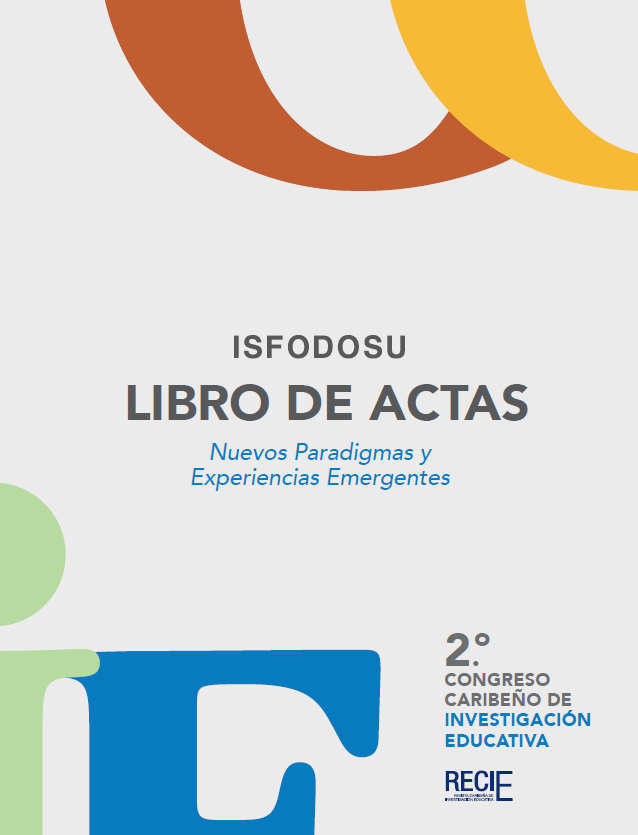Diseño y validación de un instrumento para la taxonomía y el interés de uso de herramientas web y recursos digitales en el aula
Descargas
Resumen
Con la existencia de tantas herramientas web así como con el aumento de su uso en el mundo educativo, se hace necesario el poder clasificarlas y conocer sus potencialidades didácticas. Esta investigación ofrece el resultado del diseño y validación de un instrumento, FICTIC, que permite esta taxonomía y el conocimiento de las posibilidades que las herramientas web pueden ofrecer a los docentes para su implementación en las aulas. Ante una necesidad del uso de estas herramientas, se debe acudir a este instrumento que nos dará las pistas sobre si es el adecuado o no. En un futuro, se debe revisar y actualizar, como consecuencia del ritmo vertiginoso en el que avanza la tecnología educativa.
Palabras clave
taxonomía, herramientas web, aula
Publicado
Número
Sección
Cómo citar
Licencia
Derechos de autor 2021 Congreso Caribeño de Investigación Educativa

Esta obra está bajo una licencia internacional Creative Commons Atribución-NoComercial-SinDerivadas 4.0.
Citas
Astorga-Aguilar, C., & Schmidt-Fonseca, I. (2019). Peligros de las redes sociales: Cómo educar a nuestros hijos e hijas en ciberseguridad. Revista Electrónica Educare, 23(3), 339-362. https://dx.doi.org/10.15359/ree.23-3.17
Baram-Tsabari, A., & Segev, E. (2011). Exploring new web-based tools to identify public interest in science. Public understanding of science, 20(1), 130-143. https://doi.org/10.1177/0963662509346496
Bates, T. (2011). Understanding Web 2.0 and its implications for e-learning. En Web 2.0-Based E-learning: Applying social informatics for tertiary teaching (pp. 21-42). IGI Global.
Chang, K. E., Sung, Y. T., & Hou, H. T. (2006). Web-based tools for designing and developing teaching materials for integration of information technology into instruction. Journal of Educational Technology & Society, 9(4), 139-149. http://www.jstor.org/stable/jeductechsoci.9.4.139
Nesbit, J. C., & Li, J. (2004). Web-based tools for learning object evaluation. En International conference on education and information systems: Technologies and Applications (pp. 21-25).Paiva, S., Oliveira, L., & Reis, L. P. (2020). An assessment classification of formative evaluation tools and digital tools. En L. Gómez, A. López & I. Candel (Eds.), ICERI2020 Proceedings (pp. 3180-3189).
Patel, J. M. (2017). Web Based Tools of Technology in Futureteaching Learning Strategies. International Education and Research Journal [IERJ], 3(2), 5-6. https://doi.org/10.37867/TE110205
Rojas, E. M. (2002). Use of Web‐based tools to enhance collaborative learning. Journal of Engineering Education, 91(1), 89-95. https://doi.org/10.1002/j.2168-9830.2002.tb00676.x
Skiba, D. J. (2013). Bloom's digital taxonomy and word clouds. Nursing Education Perspectives, 34(4), 277-280.
Webb, S., van Oostveen, R., Barber, W., Percival, J., & Childs, E. (2018). Examining the use of web-based tools in fully online learning community environments. En Universal Design & Higher Education in Transformation Congress.
Wilbur, S. (1998). Creating a community of learning using web-based tools. En The Digital University (pp. 73-84). Springer.

